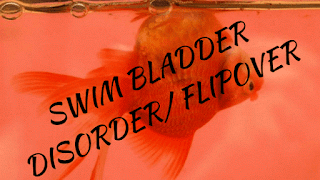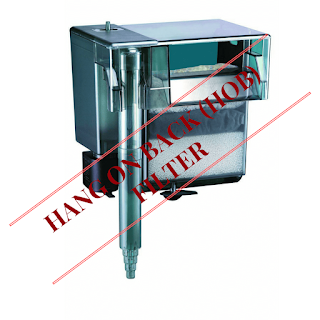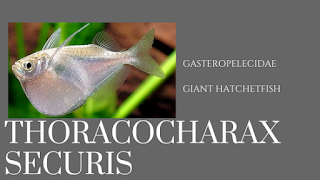Today I will inform you about common aquarium fish diseases which are secret hazard for your aquarium.
If you realize that symptom of diseases you have a chance to cure your fish. But you must be always careful when you check your fish.
Let's start.
Freshwater Ich (White Spot) (Ichthyophthirius Multifiliis)
It is too common disease and lots of aquarium owner
probably face with it. Main reason for it parasites and if you do not take
action, it can be mortal for your fish. If you do not control this disease it
may pass over one fish to whole aquarium because it is fast spanning over
parasite. Confusions on the body, fin and gill, may also effect movement and
vantilation of your fish.
Signs: White
spots on the body of fish, fin and gill. And each white spot includes parasite.
Factor: Cause
of this disease is unicellular which named Ichthyophthirius.
Treatment: If you
are in doubt about one of your fish get Ich, you must directly isolate it from
the main tank. Main treatment method is daily application of Ich Medicine and daily
water change in your quarantine tank. It is also recommended that application
of medicine to main tank for both to clear your mind and decrease the chance
infection to other fishes in your tank. And clear all aquarium decoration,
filtration and an other equipments.
Protection: Select
confidential petshops and purchase healty fish. Quarantine new fishes before
transfer them to main tank. Always observe aquarium parameters to prevent
parasite colonization.
Fin Rot
Fin rot is an other common fish disease. Its start at the
edge of the fin and if not treated when fin ends it pass through the body of
fish. Fin rot is common for large fin fish like bettas.
Signs: Edges
of the fin become darker and fins fray. Base of fin seems gleety. White spot on
fin like Ich.
Factor:
Fin rot can be because of bacterial infection which named
pseudomonas fluorescens or fungal infection. With out infection, you can also
face with fin rot. Poor diet, injury, stress in aquarium and aquarium parameters
may stimulate fin rot.
Treatment:
Take out the fish and place it to qyarantine tank. Start
to use phenoxyethanol, malachite green or methylene blue. Measure water
parameters and correct them by using proper agent. Arrange water temperature.
If the reason of fin rot is bacterical or fungal, in high temperatures they
reproduce much more faster. Arrange number of fish according to your tank size.
Protection:
Always check water condition and do regular water change.
Do not give overdose food. Keep constant the water temperature. Quarantine new
fishes before transfer them to main tank.
Dropsy
Dropsy is like edema. Your fish starts to seem like puffy.
Signs: It
differ fish to fish but in general fish seems like bigger and puffy. Their eyes
bulge and gills become pale.
Factor: Poor
water quality, sudden change in temperature, stress and quality of food. And
also bacterical and fungal diseases may be the reason of it.
Treatment: Again
same take fishes to quarantine tank. Check the main aquarium general condition
and parameters. Apply needed changes in aquarium. Use good quality foods. If it
is needed give some antibiotics.
Protection: Do not overfeed your fishes. Use different type of food to support their digestion system. Take care of your fish compatibility and number in aquarium. Clean regularly both aquarium and filtration system. And also do not forget regular change of aquarium water.
Protection: Do not overfeed your fishes. Use different type of food to support their digestion system. Take care of your fish compatibility and number in aquarium. Clean regularly both aquarium and filtration system. And also do not forget regular change of aquarium water.
Swim Bladder Disorder (Flipover)
Swim bladder is an organ which gives an ability to fish control their swim level without spent an energy.
Signs: They can not swim regular. Generally they float upside down. If there is high water flow because of filtration motor, they sway from side to side.
Factor: Birth defect, compression of other enlarged organs. Too much food and air could be reason of it. And also constipation and intestinal parasites.
Treatment: Do not give food for 2-3 days by observing their condition. Increase water temperature to help their digestion. If starve is not work, you may use antibiotics.
Protection: To avoid swim bladder disorder you must feed your fish planned. Use quality food and take care of aquarium cleaning.
Gill/Skin Flukes
Your fish skin seem like flaking because of parasite.
Signs: Lost of color, red skin, rapid vantilation, blood spots.
Factor: Cause of this illness is parasite that named dactylogyrus.
Treatment: Keep effected fish in quarantine tank and start antibiotics. It is also recommended that increasing salinity rate of water.
Protection: Place new fishes quarantine tank before transfer them to main tank. Live foods may includes parasite so that take life food from trusted petshops.
To Sum Up
If you want to keep your aquarium healty and protected from the illnesses;
- Choose quality feed
- Choose trustful petshop
- Keep clean your aquarium
- Keep new fishes in quarantine before placing to main tank
- Always control water parameters.
















